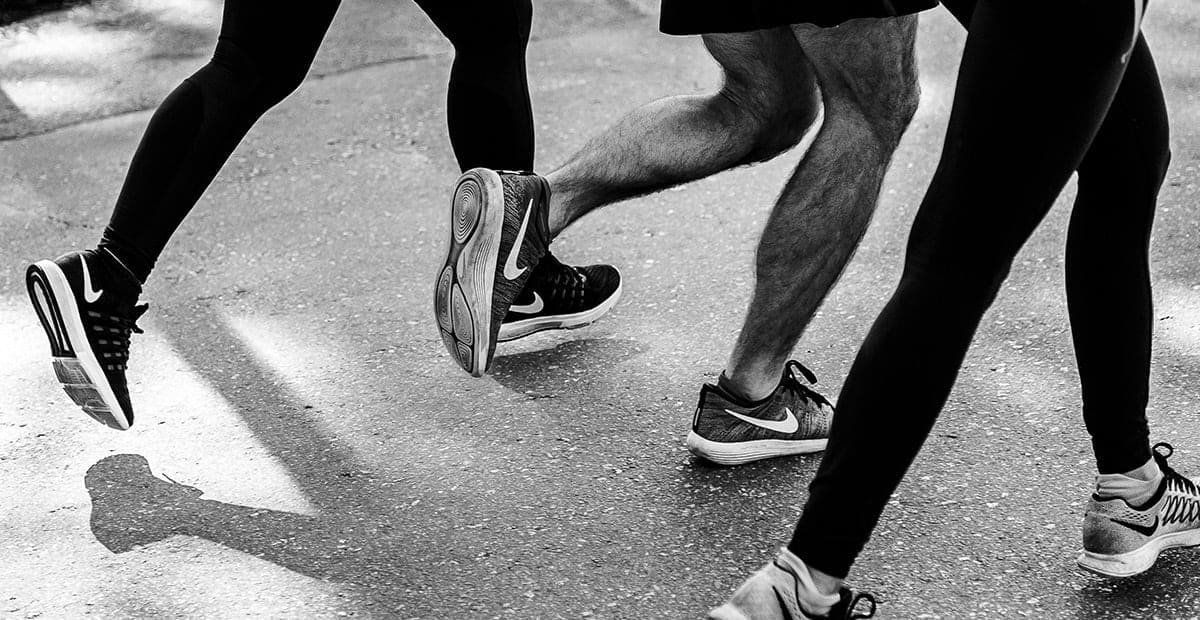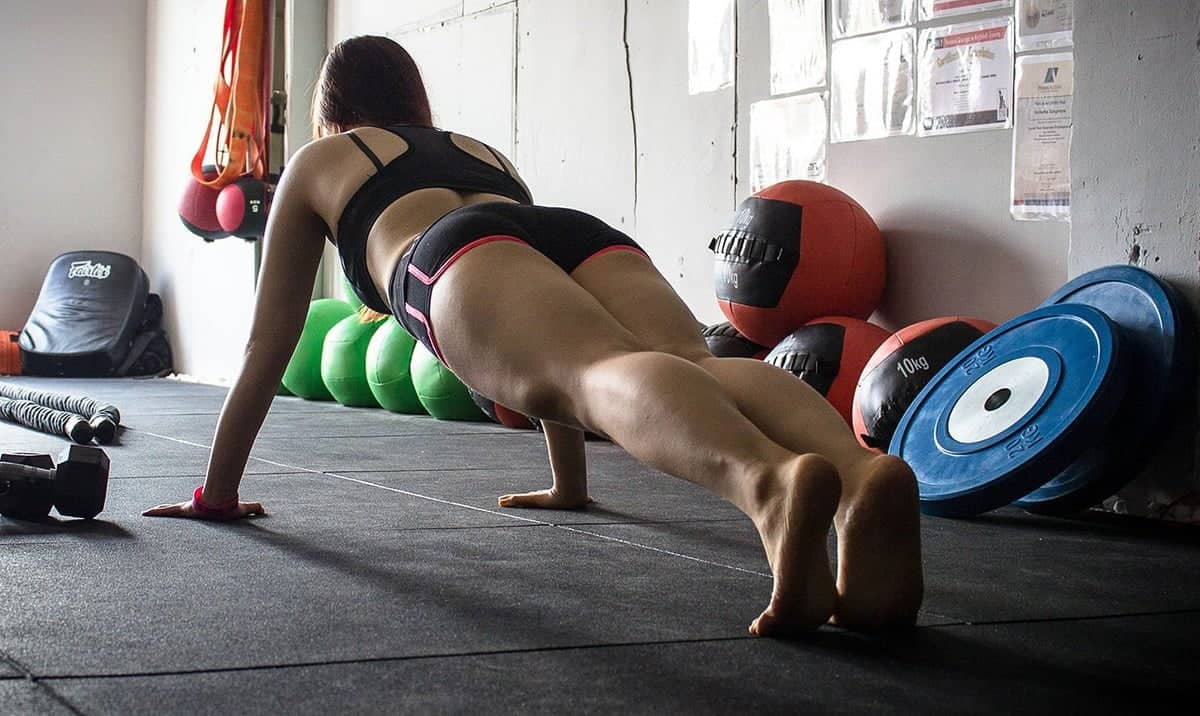Affiliate Disclosure: Some of the links in this post are affiliate links. As an Amazon Associate, we earn from qualifying purchases. Read more in our affiliate policy.

How to Use a Mini Trampoline for Exercise for Cardiovascular, Strength and Balance Training
Mini trampolines, also known as rebounders, are fabulous pieces of exercise equipment. You might know them for their ability to improve heart health, but they’re extremely well rounded, fitting into any routine.
However, it might not be clear at first on how to use a mini trampoline for exercise as a form of cardiovascular, strength or balance training. To help you start your training, check out this practical mini-guide.
Trampolines in Cardiovascular Training
Rebounders are best known for their cardiovascular benefits. Exercises to try include:
-
Jogging
The main difference between trampoline jogging and track/road/trail jogging is that you don’t really have space to complete a full stride. You’ll be bringing your heels up more as a result, so your hamstrings get a little more work. As you get more fit, work on picking up your pace.

-
High Knees
This move is great for your abs, quads and hip flexors. Bring your knees to waist level as you jog. Do them at walking speed for a gentle warm up.
-
Lateral Jumps
Lateral jumps work mainly your adductors. They’re
killer because they require you to jump up and onto the center of the rebounder with a lot of power. When you jump off the opposite side, the challenge is to land softly, accommodating the fact that the floor won’t give as the trampoline does. -
Rock Stars and Cannonballs
For a rock star jump, jump high and bring your heels up as close to your bottom as you can. They’re great for your hamstrings. For a cannonball, you jump high and then bring your knees as close to your chest as possible before landing. Both of these moves require you to engage your core.
-
Airborne Jacks
Traditional jacks are a little tough to do on a rebounder unless you have a larger one, but airborne jacks are workable for most sizes. Instead of touching your feet down when you jump out, pop your legs out and back, landing in the center of the rebounder with a slight squat.
Mini Trampoline in Strength Conditioning
If getting stronger and toned is your goal, use your mini trampoline for:
-
Push-Ups
Doing pushups on the floor is tough. Doing them on an unstable surface is even tougher. Your mini trampoline can stand in for a stability ball for this purpose. It won’t roll away as a ball can, and it’s also lower, forcing you to work harder against gravity to push yourself up.
You also can put your feet on the rebounder and have your hands on the floor for another variation.
-
Planks
Just as the uneven surface of your rebounder creates a new challenge for pushups, it also adds a new level of difficulty to any plank move. Push yourself to go for a longer amount of time in the plank position of your choice every workout.

-
Lunges
There are almost too many lunge variations to count (ps. here you will find top 10), but a stationary lunge is perfect for beginners. Place one foot on the rebounder and then bend your back knee. Go down as far as is comfortable, the only restrictions being that the front knee doesn’t go past your toe and the back knee doesn’t touch the floor.
Repeat the movement for at least 8 to 12 repetitions per side. A forward lunge is the next step. For this one, you start with both feet on the floor and then step forward toward the center of the rebounder, following through just as for the stationary lunge. Then push off the rebounder and return to your start position. You also can try side lunges in a stationary and flowing style.
Another option is the stationary elevated rear lunge, where your back foot is on the rebounder as you lunge. Many people get great results by adding uneven squats into the mix, too. For this, stand by the side of the rebounder and place the foot nearest it on the platform. Then perform your squat as normal.
Experiment by adding weights as you feel ready. Working isometrically (holding the position) is another route to explore.
TIP: If the exercises on trampolines are not your story, you can try using air track. It is also a great home fitness tool.
Rebounder Trampoline in Balance Training
Like a Bosu ball, a mini trampoline is ideal as a balance tool. Try these exercises to start:
-
One Leg Holds

Stand in the center of the mini trampoline and pick one foot up just enough to clear the platform. Engage your abdominal muscles and make sure you squeeze those glutes a bit, as they are key players in stabilizing the pelvis and, thereby, the knees.
Feel groovy in this position? Bring your knee all the way up and hold your quad parallel to the ground. Still, want more? Straighten your leg.
You also can lean forward and, keeping the back leg straight, do a rear leg lift. You can hold isometrically at the top if desired, bringing your arms out and forward to help you stabilize.
Do the whole routine again, but this time rotate the lifted leg to the side. You can grab your toe with one hand or use a band to assist you if needed for a good stretch.
-
Yoga Poses
Many yoga poses get a rewrite on the rebounder. Ones to try might include tree, chair, eagle, king dancer, warrior three, half moon, bird of paradise and sugarcane.
Blend balance with strength for the upper body with moves like a peacock, crow and side crow, scale, firefly, and scorpion.
For safety’s sake, make sure you are a pro at these on the floor before trying them on the rebounder.
Here’s a helpful video we’ve found. It shows how to use a mini-trampoline for exercise:
How to Use a Mini Trampoline for Exercise – Conclusion
Mini trampolines are far more versatile than most people realize. With this one piece of equipment, you can get cardiovascular, strength and balance training. It’s simply a matter of deciding which moves are appropriate for your fitness level and goals (like weight loss or strength training).


